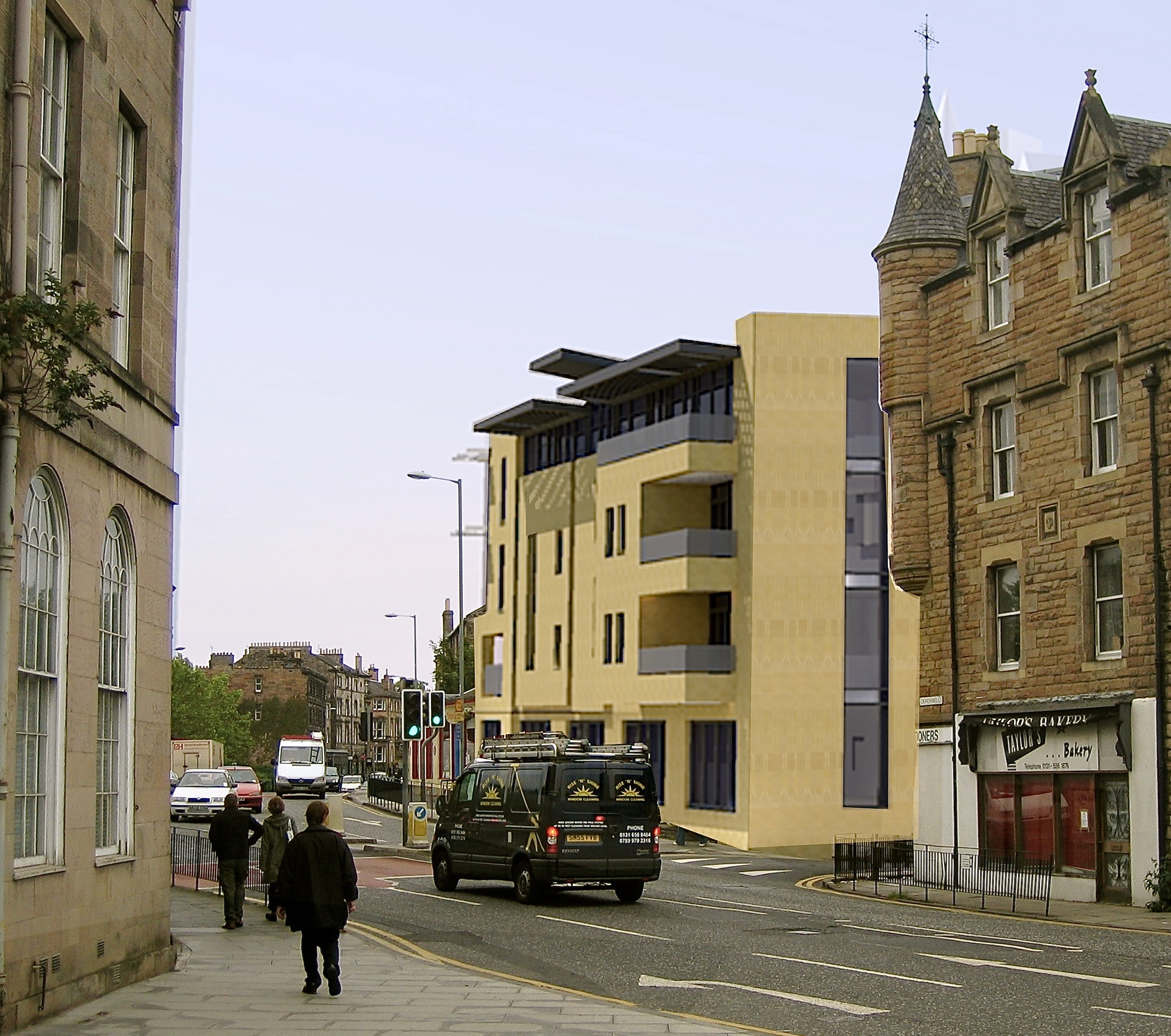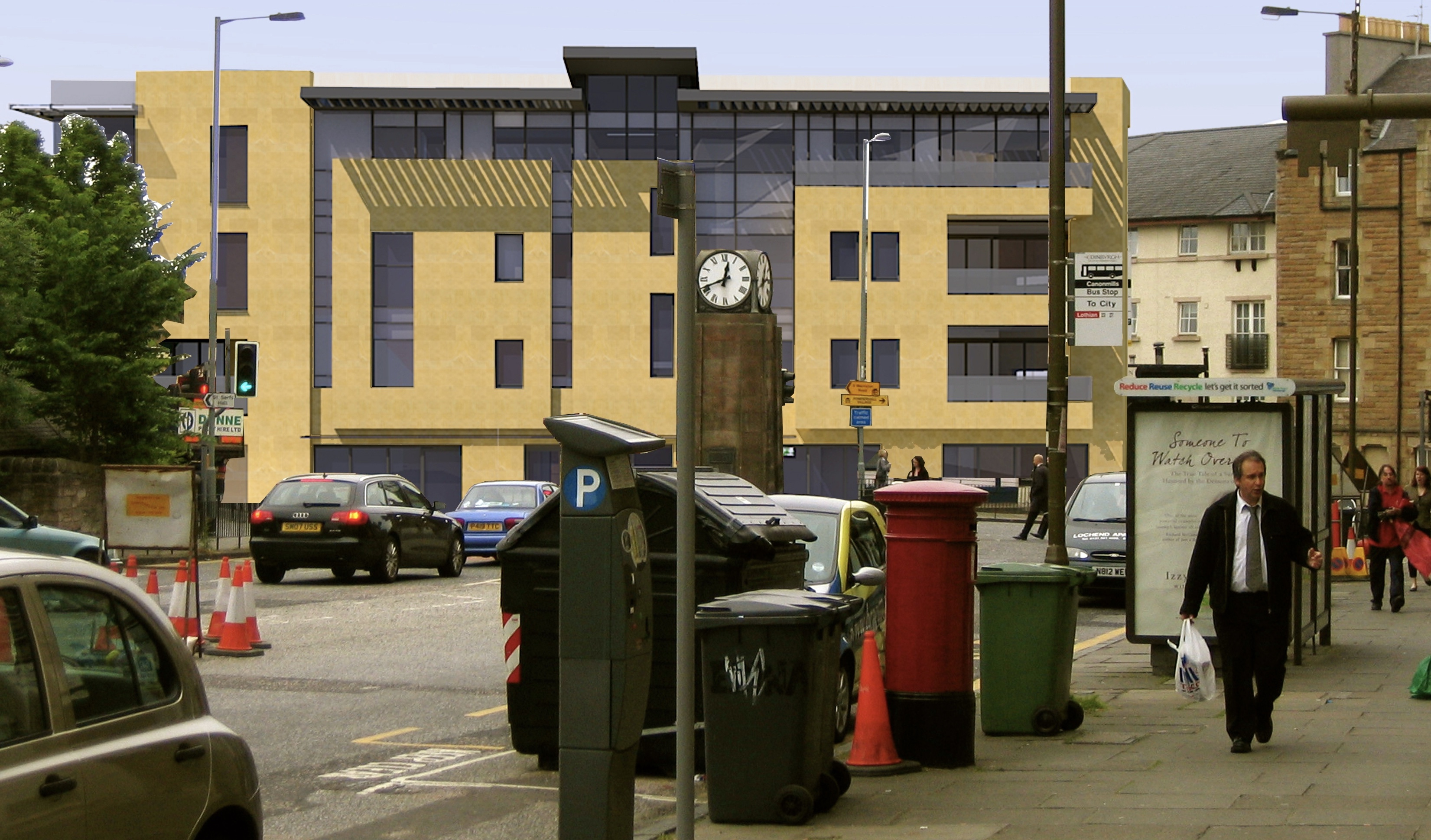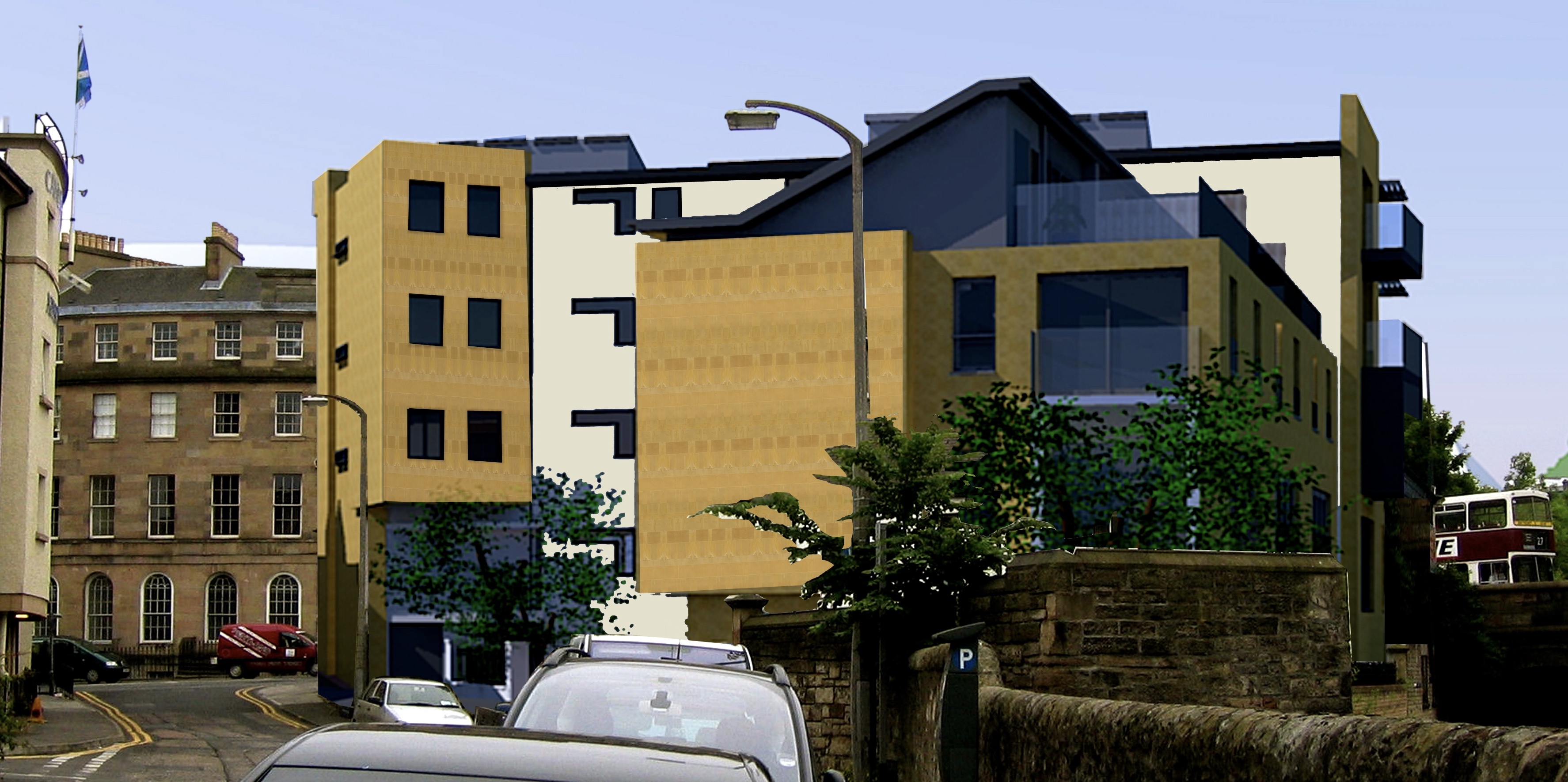
DEMOCRACY DEMANDS BUCK STOPS WITH LOCAL COUNCILLORS, SAYS FORMER PLANNING CONVENER
Trevor Davies was a Labour councillor for the Broughton ward ward from 2001–2007, serving as Planning Convener from 2003–07. He was a trustee of Edinburgh World Heritage, and, since 2008, has been an Honorary Professor in Urban Studies at Glasgow University.
A long-term nearby resident (and occasional artist), we invited him to reflect on last week’s controversial announcement about the demolition and redevelopment of 1–6 Canonmills Bridge.
Mistaken
The decision by a Scottish Government planning reporter to allow the building at Canonmills currently occupied by Earthy was, to my mind, quite wrong; it will damage the architecture, the amenity and the prosperity of the area and is deeply to be regretted.
It was also inevitable.

Some history
The application to build a large block of flats and townhouses on the site was approved by the then Liberal Democrat/SNP Council in 2010. But for some reason – who knows if it was absent-mindedness or cleverness – the necessary parallel application to demolish a building in a conservation area (today's 1-6 Canonmills Bridge) to clear the site was neither submitted at the same time, nor was it requested by City of Edinburgh Council's Planning staff.
By the time that application was submitted there had been a local election and the complexion of the Council had changed to Labour/SNP. With the change in administration came a change of view.
So we then had a situation where there had been a permission to build, but refusal to allow the prior demolition so that the build could go ahead. A signal if there ever was one for the lawyers to become involved. And lawyers do not make good planners. It came as no surprise to me that the Scottish Government reporter simply allowed the earlier planning permission to proceed by approving the demolition.
The foundation of our planning system is the 1945 Town and Country Planning Act. For the first time, this brought development under democratic control. But, like many of the reforms of the Atlee Government, it required compromise to get past the opposition. (Remember Nye Bevan’s phrase that he had to ‘stuff their mouths with gold’ to remove doctors’ opposition to the founding of the NHS?) Similarly, the planning minister, Lewis Silkin, found it necessary to amend the Act to allow landowners to appeal the decision of local councils.

The current reality – time for a rethink
And so we have the situation we’re in today. Scottish Government reporters are mid-ranking civil servants to whom landowners and developers may appeal if they can muster sufficient legal and planning grounds against the relevant local council.

Now – and this is my opinion – I think it is time for a complete rethink about planning and local democracy.
There will always – always – be heated and contested debate about new development. There will be screams and shouts and vociferous lobbying for one side or another. This is as it should be.
But I have long thought that it should be the local elected councillors, who can be voted out – or back – at the next election, who ought to be the final arbiters.
Councillors are there to represent the public interest that Lewis Silkin thought should be at the heart of development decisions. I don’t think that middle-ranking civil servants from somewhere else ought to have the final say. I argued for this when I chaired Edinburgh’s Planning Committee way back and the new Planning Act was going through the Scottish Parliament in 2005/06. But ministers, of course, wouldn’t entertain the idea.

Valuing old buildings
So we are where we are. Canonmills will, I believe, be irrevocably damaged visually and economically by that first decision made in 2010.
Since then, we’ve seen the publication in 2013 of an extraordinary piece of work by the Heritage Lottery Fund – its ‘New Ideas Need Old Buildings’ (see pdf at foot of this page).
Their research in this showed that innovation and productivity of businesses in quality old buildings – adapted, altered and modernised, no doubt – is generally greater than that in new buildings. Local councillors, community activists and planning reporters should all read it.
And for demonstration they need do no more than compare the success of the current business on Canonmills Bridge with the length of time it has taken to fill retail units just round the corner on Dundas Street, in the new building up the hill from Clark’s Bar.
Got a view? Tell us at
spurtle@hotmail.co.uk and @theSpurtle and Facebook
-----------------------------------
@davies_trevor @theSpurtle I thought the article was good. I'll read the referenced report later http://www.broughtonspurtle.org.uk/news/who-should-make-final-decision-planning …
@theSpurtle @davies_trevor @savecanonmillsB Problem is nobody trusts Edinburgh Council planning dept. We need 3rd party right of appeal.
 Lorraine Moore When the initial plans went through most of the community - including residents directly across from 1-6 Canonmills did not know about them. This communication should have been readily available to the community, but I am sure the developers were quite relaxed about getting their plans out there!
Lorraine Moore When the initial plans went through most of the community - including residents directly across from 1-6 Canonmills did not know about them. This communication should have been readily available to the community, but I am sure the developers were quite relaxed about getting their plans out there!
I agree the whole planning laws need a good kicking to update them - this new proposal does not enhance the area, it is too big and too bland. Lazy architecture which will look out of place in an area of Georgian town houses.
 Ann Jamieson The empty offices around the corner in Dundas Street tell us so much about the nature of 'development'. That is it delivers profits to people who have zero interest in local economies. The trend today is for small highly specific often locally specific enterprises. That is exactly what exists and what is viable at 1-6 Canonmills Bridge. What is proposed is likely a white elephant, possible future slum in mediocre architecture at best. Canonmills is so much better as it is.
Ann Jamieson The empty offices around the corner in Dundas Street tell us so much about the nature of 'development'. That is it delivers profits to people who have zero interest in local economies. The trend today is for small highly specific often locally specific enterprises. That is exactly what exists and what is viable at 1-6 Canonmills Bridge. What is proposed is likely a white elephant, possible future slum in mediocre architecture at best. Canonmills is so much better as it is.
 Roberta Buchan Trevor Davies' article explains what I was struggling to understand - the way in which the local authority decision and will of the local people could be over-ridden. The reporter system is not fit for purpose and should be replaced with one that is locally based. Also the sloppy acceptance of the original application is a disgrace and surely in itself should be good reason to set aside that decision?
Roberta Buchan Trevor Davies' article explains what I was struggling to understand - the way in which the local authority decision and will of the local people could be over-ridden. The reporter system is not fit for purpose and should be replaced with one that is locally based. Also the sloppy acceptance of the original application is a disgrace and surely in itself should be good reason to set aside that decision?
Edited e-mail from Nikita Thierry: The decision to grant the planning appeal at Canonmills [...] is an affront to any form of democracy. [...] So what happens now? If we – the ignored majority – make enough fuss, they on high will grant another look at the due process in the courts by learned council. [...] Enough is enough. This farce is over. Humanity wants to live well and with each other properly, fairly and with respect. We cannot continue seeing, reading and hearing about these decisions against the democratic wish of the people.
Fab read http://www.broughtonspurtle.org.uk/news/who-should-make-final-decision-planning … BUT need community right of appeal AT LEAST when decisions are counter to local plan @theSpurtle @PlanDemoc
@theSpurtle yes. But some of the issues currently arise not just from a faulty planning system, but from a faulty local democracy system.
 Ian Thomson Scandalous. That's about all I can blurt out just now. Davies talks a lot of sense for a politician, perhaps because he's now an ex politician.
Ian Thomson Scandalous. That's about all I can blurt out just now. Davies talks a lot of sense for a politician, perhaps because he's now an ex politician.
No matter how horrible and alienating the big, out of place buildings are on dundas st, the developers will not relent. Plenty more where these came from, where's the money in conservation?
 Susie Fabbro They've ruined the bottom end of Dundas Street and seem intent on carrying on in the same vein. Box tickers in my opinion who seem to have no sense of reason or proportion in assessing suitability. Very good article.
Susie Fabbro They've ruined the bottom end of Dundas Street and seem intent on carrying on in the same vein. Box tickers in my opinion who seem to have no sense of reason or proportion in assessing suitability. Very good article.


